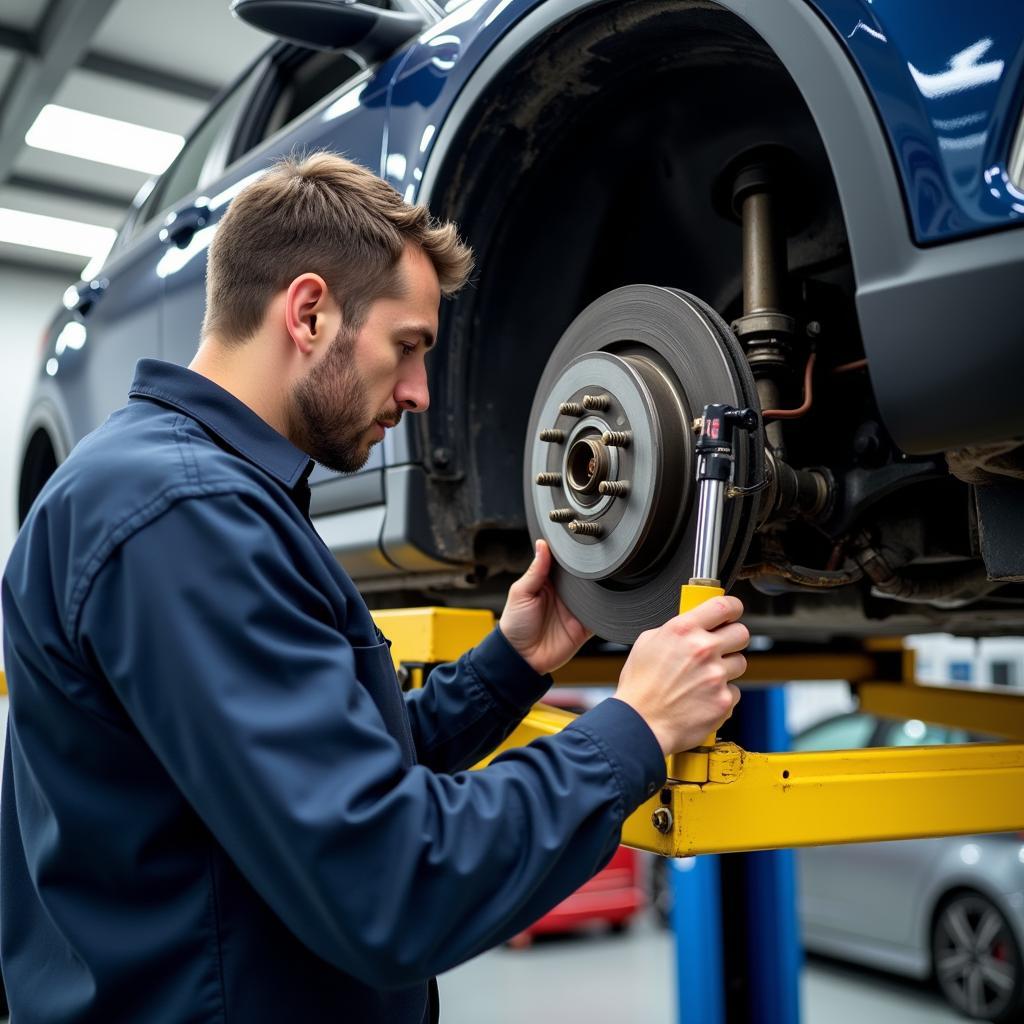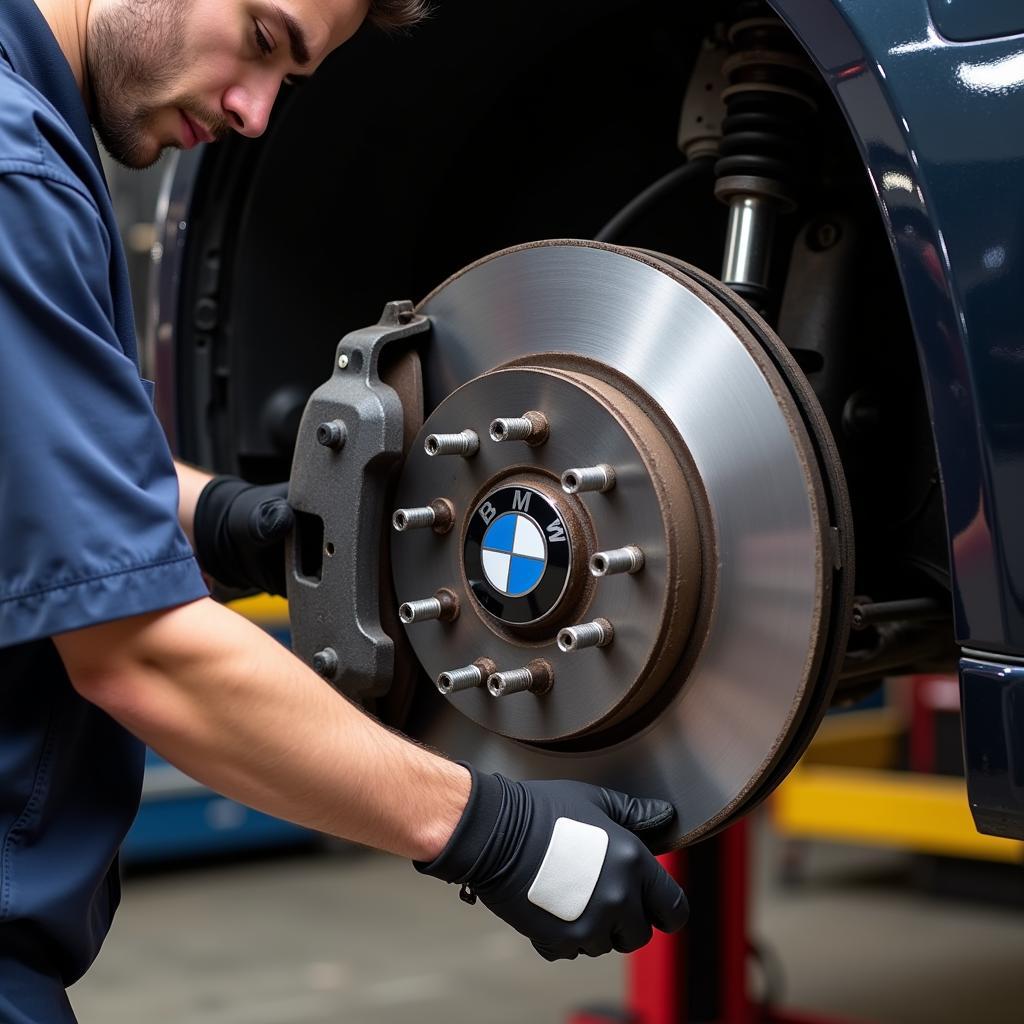The dreaded brake traction warning light on your Chevy dashboard. It can be a source of anxiety, especially if you’re not sure what it means. This comprehensive guide will delve into the common causes of the Chevy brake traction warning light, explain the associated symptoms, and provide you with step-by-step instructions on how to diagnose and potentially fix the problem yourself.
Understanding Your Chevy’s Brake System and Traction Control
Before we dive into the potential culprits behind the warning light, it’s crucial to have a basic understanding of how your Chevy’s brake system and traction control work together.
Brake System: Your Chevy’s brake system is a complex network of components that work together to slow down or stop your vehicle. It includes components like brake pads, rotors, calipers, brake lines, and brake fluid, all orchestrated by the master cylinder and controlled by the brake pedal.
Traction Control: Traction control, often integrated with the Electronic Stability Control (ESC) system, is designed to prevent loss of traction, particularly on slippery surfaces. It does this by monitoring wheel speed sensors and automatically applying brakes or reducing engine power to specific wheels when it detects slippage.
Common Causes of a Chevy Brake Traction Warning Light
The illumination of the brake traction warning light could indicate a range of issues, from minor sensor glitches to more serious problems within the brake system itself. Here are some of the most common culprits:
1. Worn Brake Pads
What it means: Brake pads are designed to wear down over time. When they become too thin, your Chevy’s brake sensors will trigger the warning light.
Symptoms:
- A squealing or grinding noise when applying the brakes
- Reduced braking performance
- Vibrations felt through the brake pedal
2. Faulty Wheel Speed Sensors
What it means: Wheel speed sensors are crucial for the proper functioning of your traction control system. If a sensor malfunctions or gets covered in dirt or debris, it can send inaccurate readings, leading to the warning light.
Symptoms:
- Inconsistent speedometer readings
- ABS light might also illuminate
- Traction control system may activate unnecessarily
3. Low Brake Fluid
What it means: Brake fluid is essential for transmitting the force you apply to the brake pedal to the actual brakes. Low brake fluid level can significantly reduce your braking power and is a serious safety hazard.
Symptoms:
- Spongy or soft brake pedal
- Brake pedal travels further down than usual
- Other warning lights related to the brake system might appear
4. Malfunctioning ABS Module
What it means: The ABS (Anti-lock Braking System) module controls the anti-lock braking system. A faulty module can disrupt the traction control system and trigger the warning light.
Symptoms:
- ABS light might also be on
- Grinding noise when braking, particularly during ABS activation
- Brakes might lock up during hard braking, contrary to the ABS function
5. Electrical Issue
What it means: Like any system in your Chevy, the brake traction control system relies on a network of wiring and electrical connections. A blown fuse, a loose connection, or damaged wiring can disrupt the system’s operation.
Symptoms:
- Other electrical systems in your car might malfunction
- Flickering dashboard lights
- Warning light might be intermittent
Diagnosing the Problem
While it’s always recommended to have a qualified mechanic diagnose and repair brake-related issues, there are a few checks you can perform yourself:
-
Check Your Brake Fluid: Locate the brake fluid reservoir (refer to your owner’s manual) and check the fluid level. If it’s below the minimum mark, add the correct type of brake fluid for your Chevy model.
-
Inspect Your Brake Pads: If you’re comfortable with basic car maintenance, you can visually inspect your brake pads. Look through the spaces between the spokes of your wheels for the brake pads. If they appear to be less than ¼ inch thick, it’s time for a replacement.
-
Scan for Trouble Codes: If your Chevy is equipped with an OBD-II port, you can use an OBD-II scanner to read any stored trouble codes. These codes can provide valuable insight into the source of the problem.
“Remember, never ignore a brake warning light. Addressing the issue promptly ensures your safety and prevents potentially more costly repairs down the road.” – John Miller, ASE Certified Master Technician
 Mechanic Inspecting Brake System
Mechanic Inspecting Brake System
What to Do When the Brake Traction Warning Light Comes On
- Stay Calm: If the warning light illuminates while you’re driving, don’t panic.
- Assess the Situation: Are you experiencing any braking issues? Is there a noticeable change in your car’s handling?
- Find a Safe Place: If possible, pull over to a safe location off the road.
- Contact a Mechanic: Schedule an appointment with a trusted mechanic or dealership to have your Chevy diagnosed and repaired.
Conclusion
The brake traction warning light in your Chevy is a crucial safety feature, not a warning to ignore. Understanding the potential causes, recognizing the associated symptoms, and knowing how to respond can save you time, money, and most importantly, keep you safe on the road.
FAQs
1. Can I drive my Chevy with the brake traction warning light on?
While it might be technically possible to drive a short distance, it’s highly discouraged. Driving with a potential brake or traction control issue puts you and others at risk.
2. How much does it cost to fix a Chevy brake traction warning light issue?
The cost of repair varies widely depending on the underlying cause. A simple brake pad replacement will be considerably less expensive than replacing a faulty ABS module.
3. Can I reset the brake traction warning light myself?
While you might be able to temporarily reset the light by disconnecting the battery, it’s not a solution. The underlying problem will persist and the light will reappear.
4. Is it safe to ignore the brake traction warning light if it’s intermittent?
No, any warning light related to brakes or traction control should never be ignored, even if it’s intermittent. It indicates a potential problem that requires professional attention.
5. How often should I get my Chevy’s brakes inspected?
It’s good practice to have your brakes inspected annually or as recommended in your Chevy’s owner’s manual. Regular maintenance can help prevent unexpected brake issues and ensure optimal braking performance.

